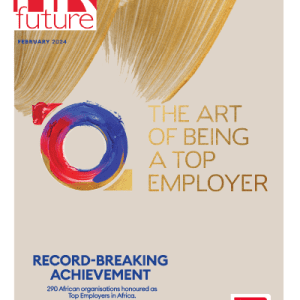Businesses recognize the value of data visualization and its potential to improve their performance. It is used in various industries, including Human Resources.
HR departments handle a large amount of protected employee and company data to make business decisions. This data must be communicated with stakeholders to provide results.
One of the most effective ways to communicate this information is through data visualization. It allows managers and executives to understand gathered information and make strategic business decisions. For HR specialists, it can change the process and outcomes of recruitment, employee retention, and performance management.
In this guide, we’ll show you the benefits of utilizing data visualization in human resources. You’ll also know how displaying data can improve the success of HR teams and organizations.
What is data visualization for HR?
Data visualization, as a part of HR analytics, is a growing trend in the industry that Human Resource professionals should pay attention to.
Data visualization for HR is the graphical representation of data and information in a way that’s easy to understand and get insights. You can display this data through graphs, charts, bars, and maps, allowing you to highlight patterns and trends in your data.
Interactive data visualization also makes it easy to present complex information in a way that is accessible, clear, and engaging.
From this, with accurate and well-employed data visualization in human resources, gaining insights into business trends, understanding your business processes, and making better decisions becomes easy.
4 Benefits of data visualization in Human Resources
The amount of data HR teams handle varies depending on the business’s size. While this data is important to understand employee trends.
Some of the benefits of data visualization for HR are the following.
1. Being up-to-date with an HR state
Like in every industry, the trends change rapidly. To remain relevant, you need to keep up with these trends.
Data visualization will help you detect industry patterns and stay ahead of the competition. You can plan based on your predictions and prevent potential organizational failures.
Data visualization and predictive analysis will help you identify possible recruitment scenarios and improve your existing processes. You’ll be able to determine what kinds of employees your organization needs and how to attract and retain them. This way, you can remain relevant in the industry while fostering business growth.
With a data visualization tool, you can determine the strengths and weaknesses of your HR team and create effective work processes to improve efficiency.
2. Making data-driven recruitment decisions
The recruitment process is essential to the general functioning of a business, so a lot of time, money, and effort goes into it. For a successful hiring process, you need to know the required skill set for each role and additional relevant information regarding the position.
By conducting in-depth research, analyzing, and visualizing reliable data, you can gain insights into each role’s requirements and utilize them for recruitment decisions. You can conduct an objective recruitment process and determine the best candidates for your organization based on skill and qualification similarities in high-performance employees.
With accurate data analytics visualization, you won’t rely solely on your gut. You can improve your organization’s performance and efficiency by hiring the best candidates for the role based on up-to-date and visualized data.
You can also determine the industry’s competitive compensation and benefits for each position to give high-quality candidates the best offer to retain them. This data-driven decision process ensures the best path for your business’ success.
3. Improving employee engagement and retention
As an organization, it isn’t enough to hire the best candidates. You must also retain them and improve employee satisfaction for productivity and efficiency. In this aspect, data visualization will be more reliable than instincts.
Data visualization can help you analyze employee performance and predict which employees will likely leave the organization quickly. You can also examine how to improve employee engagement based on company culture, compensation, and benefits.
Data visualization in human resources can help avoid the cost and disruption of employee loss. You can clearly see the primary reason behind employee resignation, take the necessary steps to retain the best talents, and plan for vacancies and skill shortages ahead of time.
4. Understanding employee development needs
Understanding your employees can boost your organization’s productivity and profit significantly.
You can use this knowledge to determine their interests and improve employee performance. With data visualization, you can analyze the information gathered and find relevant training and development programs to cover employee learning needs.
In-depth research will show you what training programs to organize for employees, their impact on their performance, and areas for improvement. These programs can boost efficiency, and with data analytics visualization, you can display what training employees need and create a better working environment. This will help you manage cost, time, effort, and resources.
How to make a good HR dashboard
HR dashboards help HR managers organize, track, and analyze company data in real time. To arrive at this, your HR dashboard must be accurate and reliable.
Let’s explore four essentials to build a good HR dashboard.
1. Collect all the required data
When making your HR dashboard, the first step is determining what data visualization tool you want to work with. Also, you need to understand which metrics you’d like to display.
Once you have determined your HR metrics and data visualization tool, you need to gather the relevant data. These records must be accurate and up-to-date to reach the right conclusion.
You should ensure that all of your data is connected to understand how they influence one another. Using data visualization tools’ functionality or third-party integrations, you can collect the data, keep it updated, and turn it into a live dashboard.
For instance, you use Tableau. You can export calculated fields from Tableau automatically and then build shareable dashboards in Looker Studio or spreadsheets.
In any case, automatically exporting and importing needed data for data visualization is relatively easy to implement. But it saves time and keeps your records fresh.
2. Choose the type of data visualization
Having streamlined and synchronized data, you must think about how to present the data. Some data visualization types you can choose from:
- Pie charts;
- Column charts;
- Graphs;
- Bar graphs;
- Maps;
- Heat maps;
- Plots; and
- Animations.
Various types of data visualization are suitable for different data sets and purposes. So you should treat each case individually and experiment with the types. Except for these types of data visualization, you can combine your data into trendy infographics and use it for company presentations.
3. Make captions clear
It is easy to overlook or misunderstand the captions of your HR dashboard. However, this is an important part of your overall data visualization.
The captions must be clear and concise, such that anyone can see and understand your report. Otherwise, you won’t be able to present your data clearly to people checking your dashboard for the first time. Captions must provide all the contextual information.
4. Don’t overcomplicate an HR dashboard
Your HR dashboard should be simple enough. You should design such that anyone can read and understand your report and derive insightful conclusions. The simpler the dashboard, the more effective the perception.
It’s a good practice to have separate dashboards for particular areas, say, one for applicants, another for employee feedback, etc. Also, feel free to delete some data in your dashboard.
In data visualization, clarity and focus on a topic are more important than presenting all the HR data at once in a heavy dashboard.
Conclusion
It is now essential for HR teams to understand and create effective data visualization in today’s data-driven world. With data visualization in human resources, your team can enhance positive outcomes in the organization’s hiring, management, and retention aspects. Ensuring your HR dashboard is accurate, concise, and easy to understand will improve employee retention and overall company growth.
Main Pic source: Pexels
Dmytro Zaichenko is a Marketing Specialist at Coupler.io, an all-in-one data analytics and automation platform. He has over 3 years of experience in digital marketing, particularly in SaaS. Apart from experimenting with marketing tactics, he’s a huge NBA fan.








